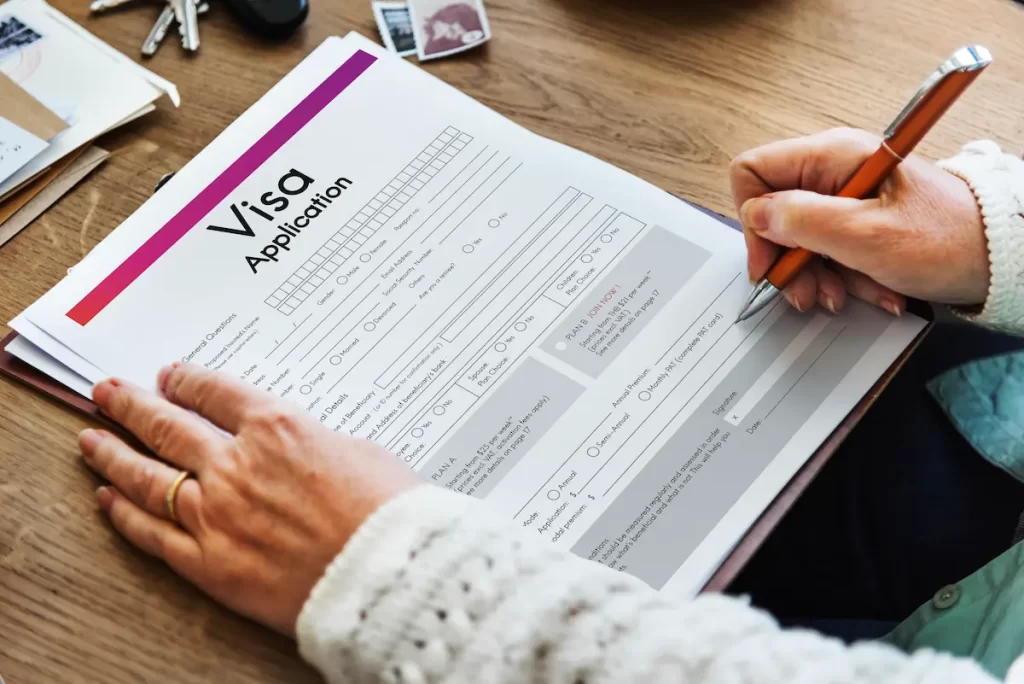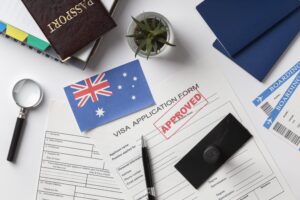
Australia’s international education landscape has undergone one of its biggest transformations in years. For students planning to study there, keeping up with these policy shifts is essential. With the introduction of the Genuine Student Test (GST) and higher financial requirements, understanding the new visa rules can make all the difference between a smooth approval and a delay.
This guide, prepared by Bombay Migration Australia, covers all the essential updates you need to know. We provide expert advice and tips to help you secure your subclass 500 student visa. Whether you’re applying for the first time or preparing for a renewal, these details will help you approach the process with clarity and confidence.
1. Deep Dive into the New Pillar: The Genuine Student Test (GST)
From March 2024, a major change took place for students applying for the Subclass 500 Student Visa. The old rule known as the Genuine Temporary Entrant (GTE) has now been replaced by the Genuine Student Requirement (GSR).
This isn’t just a fancy name change. The new system looks deeper into whether you are truly coming to Australia to study. The focus has shifted from checking whether a student plans to return home after completing their course to understanding whether the person is serious about researching and building a future through education.
In simple terms, the Australian government now wants to know your real reasons for studying, why you chose your course, how it connects with your career plans, and if you are prepared for student life in Australia. The GST gives genuine students a fair chance to prove their intent clearly and honestly.
GST vs. GTE: What is the Core Difference?
| Criterion | Focus of Assessment | Implications for Applicants |
| GTE (Old) | Temporary Stay. Focused on providing strong incentives to return home and ensuring the student visa was not an indirect route to Permanent Residency (PR). | Created immediate conflict for students who might desire PR after graduation. |
| Genuine Student Test (GST) (New) | Genuine Study Intent. Explicitly acknowledges that students may develop skills Australia needs and may transition to post-study work and PR pathways after graduation. | Focuses on the integrity and quality of the study plan, making the application more about the course and less about an intent to return home. |
Scoring High on the GST Criteria
The student intent assessment is conducted through a series of targeted, 150-word questions within your online application. Simply stated, your answers must be more strategic and well-organised than ever before.
To pass the new assessment, your narrative must strongly connect the following three elements:
• Academic Alignment: Why is your chosen Australian course and provider a logical next step from your previous studies or work? If you have a study gap for an Australian student visa, you must compellingly justify how the gap prepared you for this specific course.
• Career Progression: Clearly explain how the qualification will benefit your future career, whether in Australia or your home country. Provide specific job titles, salary expectations, and industry data to demonstrate the course’s economic value.
• Circumstances in Australia: Demonstrate a full understanding of the academic, financial, and visa compliance requirements of the Subclass 500 Student visa.
Red Flags for the Student Intent Assessment
To give complete guidance, we need to look at the possible reasons for visa refusal. Case officers are trained to spot certain “red flags” that may suggest an applicant’s intent is not genuine.
• Sudden Downgrade in Education: Applying for a lower qualification (e.g., a VET course after completing a Bachelor’s degree) without a strong, industry-aligned reason.
• Irrelevant Course Change: Switching from an engineering degree to a general business degree with no clear career link.
• Generic Financial Evidence: Funds deposited recently without a clear, documented source, failing the “Genuine Access to Funds” test.
2. Critical Australian Student Visa News: Financial and Work Updates
The most recent Australian Student Visa News centres on stabilising the international education sector by ensuring students are financially capable and adhere strictly to visa conditions.
Increased Financial Capacity: The AUD $29,710 Subclass 500 Student Visa Requirement
The minimum amount of money applicants must demonstrate they have for annual living costs has increased significantly to AUD $29,710 (for the primary applicant).
• Calculation Focus: This amount must cover 12 months of living expenses, held for a minimum of 28 consecutive days before application lodgement. You must factor in (AUD $29,710) + (First 12 months of tuition fees) + (Travel Cost Estimate, typically AUD $2,000).
• User Intent: How much bank balance is required for an Australian student visa?
The required bank balance is the total of the above three figures. If your course is longer than 12 months, you must show the tuition fee for the first year and the living costs for the first year.
• The ‘Genuine Access to Funds’ Test: Bombay Migration Australia advises providing clear evidence of the source of funds (e.g., tax returns, audited business accounts) to satisfy the case officer that the money is genuinely accessible.
Student Visa Work Hours – Increase Clarification
Following the temporary relaxation of work limits during the peak of COVID-19, the rules have returned to pre-pandemic conditions.
• Current Rule: Subclass 500 Student visa holders are strictly limited to working a maximum of 48 hours per fortnight during their course session.
• The Critical Error: Breaching the 48-hour limit is a direct violation of your visa conditions and is a major cause for visa cancellation, impacting your future Australian Permanent Residency pathways. Students are permitted to work unlimited hours only during scheduled course breaks.
3. Addressing Migration Strategy: Beyond the Subclass 500 Visa
To secure a long-term future in Australia, students must plan strategically for the pathway beyond their initial Subclass 500 Student visa.
Australian Student Visa Age Limit Reduction (485 Visa Link) The maximum age to apply for the Temporary Graduate Visa (Subclass 485) for most Bachelor’s and Master’s (Coursework) graduates has been lowered to 35 years. This impacts older students who saw the 485 as a necessary bridge to securing employer sponsorship or PR points.
What is the new rule in November for a visa 482?
The Skills in Demand visa (Subclass 482) (formerly the 457 visa) is the primary employer-sponsored visa and is highly relevant to students.
• Latest Rule (Since November 2023): The pathway to Permanent Residency (PR) for all 482 visa holders has been significantly streamlined.
• Link to Students: This means that once you graduate and secure a full-time job with an employer who sponsors you on a 482 visa, your pathway to PR is much clearer. The government is incentivising employers to hire talented international graduates by making their transition to PR simpler. Your study path in Australia must align with a skilled occupation to leverage this route.
4. Your Step-by-Step Australian Student Visa Application Strategy
A successful application is a well-prepared one. Partnering with a MARA Registered Migration Agent ensures every document is compliant and every statement is persuasive.
Australia Student Visa Checklist PDF Essentials: Your application must be decision-ready on submission. Essential documents include:
• Confirmation of Enrolment (CoE).
• Valid Passport.
• Evidence of Financial Capacity (held for 28 days).
• Overseas Student Health Cover (OSHC).
• Academic Transcripts & Certificates.
• English Proficiency Test Score (IELTS/PTE).
• The compulsory answers for the student intent assessment.
Student Visa Australia Success Rate: How to Maximise Your Outcome
While the overall student visa success rate in Australia is dynamic and depends on the nationality and chosen provider, the factor you can control is the quality of your application.
• The Key Strategy: Applications prepared by certified MARA Registered Migration Agents generally have a higher success rate because they:
o Address all potential “red flags.”
o Ensure all financial evidence meets the “Genuine Access to Funds” test.
o Craft a GST response that is coherent, specific, and professionally supported.
5. Partner with Bombay Migration Australia: Your MARA Registered Migration Agents
The strict requirements of the Genuine Student Test (GST) and the financial updates mean that a high-quality application is no longer optional; it is mandatory.
Bombay Migration Australia specialises in the Australian migration system. Our team of MARA Registered Migration Agents (Migration Agent Registration Number (MARN) can be verified on the OMARA website) offers local expertise and strategic support tailored for students targeting the Subclass 500 Student visa.
We provide:
• GS Statement Customisation: Crafting a compelling GST narrative to overcome profile inconsistencies.
• Financial Structuring: Guidance on presenting your finances to pass the AUD $29,710 requirement and the ‘Genuine Access to Funds’ test.
• End-to-End Compliance: Ensuring every aspect of your application adheres to the latest Australian Student Visa News and policy updates.
Secure Your Expert Application Support Today
The GST process is complex, and doing it alone can be risky. Our MARA Registered Migration Agents are here to turn policy complexity into application success.
Don’t delay your Australian dream. Start your complete Subclass 500 Student visa application with confidence at Bombay Migrations Australia.
FAQs
The Genuine Student Test (GST) is the new assessment tool used by the Department of Home Affairs to evaluate whether a student's primary intention in Australia is to genuinely obtain a quality education. It is assessed through targeted questions and supporting evidence about your course choice, academic history, and future career plans.
The terms ‘GTE’ and ‘GS’ (Genuine Student) are related, but GST is the current formal process. GTE was the previous test focused purely on temporary intent. The GST is the new test that replaces it, acknowledging PR pathways while maintaining focus on study integrity.
While the Subclass 500 Student visa itself does not strictly enforce minimum marks, most high-quality Australian universities and colleges have minimum academic entry requirements (typically 50-60% or higher). Furthermore, very low marks can act as a GST red flag, as they may suggest a lack of commitment to academic success.
You must answer concisely (150 words per question) and logically. Focus on two things: 1) Why this specific course is essential for your career, and 2) Why Australia and this specific institution offer something you cannot get in your home country. Support all claims with evidence (transcripts, professional development history, job offers).
The Genuine Student Test (GST) applies to all education sectors, including Vocational Education and Training (VET) and TAFE. The scrutiny is often higher for VET courses, requiring you to demonstrate a very clear and immediate career link between the VET qualification and your academic history or employment needs.
Visa applications can be refused if a medical condition is assessed as a risk to public health or safety, or if the estimated cost of care for the condition is deemed an "undue burden" on Australia's healthcare system (currently set at AUD $86,000). Standard conditions that can be managed are generally accepted.

